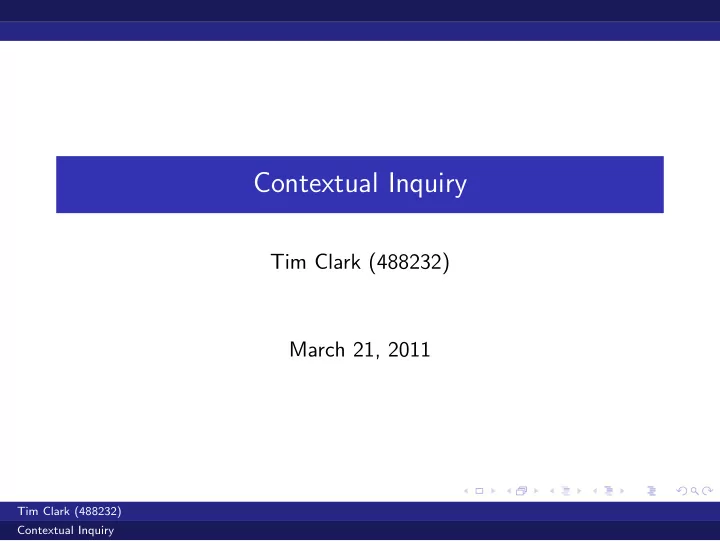

Contextual Inquiry Tim Clark (488232) March 21, 2011 Tim Clark (488232) Contextual Inquiry
What is is? Method of investigating users in the wild. Based on watching users use an existing system. Allows you to learn what tasks are performed and how they are performed. Usually recorded for later analysis. Helps you define a more detailed specification of what a user does. Tim Clark (488232) Contextual Inquiry
How do you do it? 1 Decide what you want to learn and to what depth. 2 Choose the right person to interview. 3 Initial interview: explain what your going to do. 4 Switch to a master-apprentice mode: Get them to go about their task. Watch closely how they do it. Ask occasional questions to clarify. Aim to learn how to do it yourself. 5 Summarize with the user what you have learned. Tim Clark (488232) Contextual Inquiry
Pros Watch people in their natural environment. Not much interference from the interviewer. Learn how an existing task is performed. Doesn’t take too much time away from the user performing their tasks. You learn whilst they work. Tim Clark (488232) Contextual Inquiry
Cons Hawthorne effect. Potentially disruptive to the user. Tim Clark (488232) Contextual Inquiry
The Internet Slides Available at http://sucs.org/~eclipse and probably at http://cs.swan.ac.uk/~csmax/csm49/ Tim Clark (488232) Contextual Inquiry
Questions? Any Questions? Tim Clark (488232) Contextual Inquiry
Recommend
More recommend